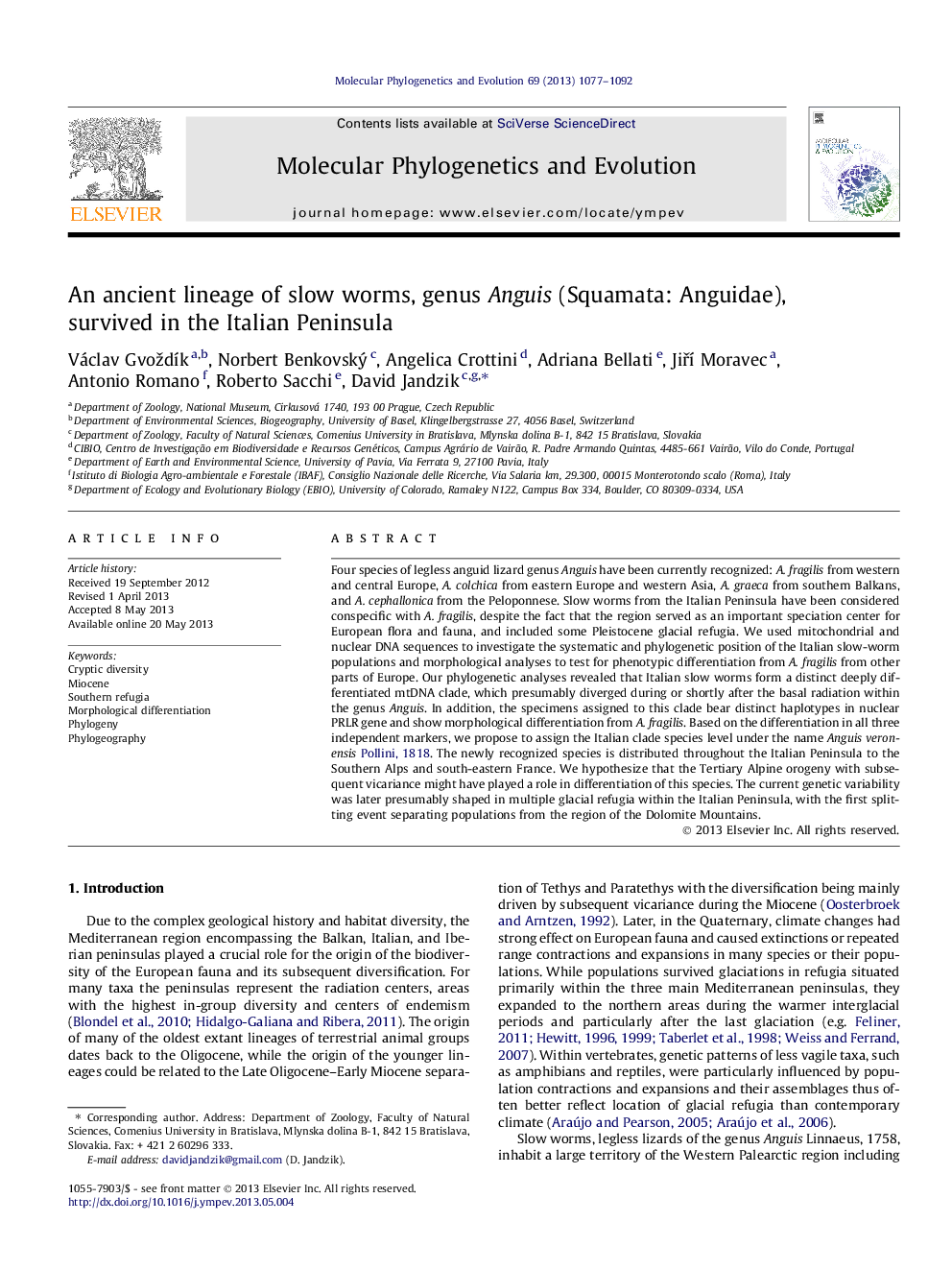| کد مقاله | کد نشریه | سال انتشار | مقاله انگلیسی | نسخه تمام متن |
|---|---|---|---|---|
| 5919742 | 1164270 | 2013 | 16 صفحه PDF | دانلود رایگان |

- Slow worms from the Italian Peninsula represent a distinct evolutionary lineage.
- They originated from basal radiation within the genus Anguis, presumably during Miocene.
- This lineage is assigned to the revalidated taxon Anguis veronensis.
- A. veronensis is morphologically differentiated from other Anguis species.
- The recent genetic variation also shaped in multiple glacial refugia in the Italian Peninsula.
Four species of legless anguid lizard genus Anguis have been currently recognized: A. fragilis from western and central Europe, A. colchica from eastern Europe and western Asia, A. graeca from southern Balkans, and A. cephallonica from the Peloponnese. Slow worms from the Italian Peninsula have been considered conspecific with A. fragilis, despite the fact that the region served as an important speciation center for European flora and fauna, and included some Pleistocene glacial refugia. We used mitochondrial and nuclear DNA sequences to investigate the systematic and phylogenetic position of the Italian slow-worm populations and morphological analyses to test for phenotypic differentiation from A. fragilis from other parts of Europe. Our phylogenetic analyses revealed that Italian slow worms form a distinct deeply differentiated mtDNA clade, which presumably diverged during or shortly after the basal radiation within the genus Anguis. In addition, the specimens assigned to this clade bear distinct haplotypes in nuclear PRLR gene and show morphological differentiation from A. fragilis. Based on the differentiation in all three independent markers, we propose to assign the Italian clade species level under the name Anguis veronensis Pollini, 1818. The newly recognized species is distributed throughout the Italian Peninsula to the Southern Alps and south-eastern France. We hypothesize that the Tertiary Alpine orogeny with subsequent vicariance might have played a role in differentiation of this species. The current genetic variability was later presumably shaped in multiple glacial refugia within the Italian Peninsula, with the first splitting event separating populations from the region of the Dolomite Mountains.
Journal: Molecular Phylogenetics and Evolution - Volume 69, Issue 3, December 2013, Pages 1077-1092